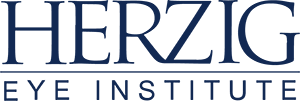Cataract FAQs
A cataract is the clouding of the eye’s natural lens, usually because of age. The lens is mostly made of water and protein. The protein is arranged in a precise way and it keeps the lens clear, allowing light to pass through it. As we age, the eye’s natural lens clouds, making it more difficult to see. The cloudy lens (cataract) is then replaced surgically with a new intraocular lens to provide clear vision.
A cataract needs to be removed only when vision loss interferes with your everyday activities, such as driving, reading, or watching TV. You and your eye care professional can make this decision together. Once you understand the benefits and risks of surgery, you can make an informed decision about whether cataract surgery is right for you. Surgery involves removing the cloudy lens and replacing it with an artificial lens.
Sometimes a cataract should be removed even if it does not cause problems with your vision. For example, a cataract should be removed if it prevents examination or treatment of another eye problem, such as age-related macular degeneration or diabetic retinopathy.
The most common symptoms of a cataract are:
- Cloudy or blurry vision.
- Colors may look faded.
- Glare or halo around lights. Headlights, lamps, or sunlight may appear too bright.
- Poor night vision.
- Double vision or multiple images in one eye.
- Frequent prescription changes in your eyeglasses or contact lenses.
The Catalys® Precision Laser System combines a state-of-the-art femtosecond laser and advanced 3D Optical Coherence Tomography (OCT) imaging to complete many of the critical steps of cataract surgery previously performed manually with handheld instruments. Using a laser to complete these steps increases precision, accuracy and safety during cataract surgery.
The most important benefit of Femtosecond laser-assisted cataract surgery (FLACS) is that it is gentle on the eye. The laser softens the lens resulting in less ultrasound energy being necessary to complete the procedure. This prevents excessive trauma and potential damage to the cornea.
In traditional cataract surgery, incisions are made using handheld tools. With the Catalys®, incisions are made with exceptional precision and accuracy. The circular opening creates the exact intended size, shape, and location. The laser is then used to break up and soften the hard cataract. Softening the lens with the Catalys® laser enables the surgeon to remove the cataract with significantly less ultrasound energy than is used in traditional manual cataract surgery. This gentle, low energy approach reduces inflammation and helps speed visual recovery.
The risk of cataracts increases as you get older. Other risk factors for cataract include:
- Diabetes
- Hypertension
- Smoking or significant alcohol consumption.
- Prolonged exposure to ultraviolet radiation from sunlight and other sources
- Prolonged use of corticosteroid medications
You will see after the procedure but it could take anywhere from 2 days to 3 weeks for your vision to stabilize. It is not unusual to have blurry vision for a few days after your surgery, as your eye is healing.
Precision Refractive Cataract Surgery is designed not only to provide excellent distance vision without glasses but also to reduce and, in most cases eliminate the need for reading glasses when possible. Many cataract patients have better vision after surgery than they had before they developed a cataract.
Traditional cataract surgery is routinely and safely performed by Herzig Eye Institute surgeons. At Herzig Eye Institute, we offer cataract patients the option of Precision Refractive Cataract Surgery. OHIP covers a portion of this procedure. There are additional fees associated with advanced technologies, such as premium intraocular lenses and diagnostic tests which are not performed in traditional cataract surgery. Many cataract patients can have better vision after Precision Refractive Cataract Surgery than they had before they developed a cataract.
Dry Eye FAQs
There are many causes of dry eye syndrome. Common triggers include contact lens wear, long hours of computer work or reading, hormonal changes (pregnancy, menopause), certain systemic medications, as well as some medical conditions such as arthritis. The most common type of dry eye is evaporative dry eyes. This is due to a shortage of oil on the surface of your tears caused by blocked meibomian glands (oil glands) on the eyelids.
Not all fish oil supplements are created equal. How the supplement is manufactured depends on how well it is absorbed into the body. A good quality Omega-3 supplement contains a high content of EPA (eicosapentaenoic acid), DHA (docosahexaenoic acid), and it’s in triglyceride form. With your doctor’s assistance the best formulation and quantity can be prescribed.
Blepharitis is a condition where there is an overgrowth of normal bacteria living along the eyelid margin and eyelashes. It can trap dead skin cells and debris near the surface of the eye. Common symptoms of blepharitis include itching, mattering, and crusting of the eyelashes, and eye irritation. If this debris clogs meibomian glands (oil glands), it can contribute to dry eyes. The prevalence of blepharitis increases with age.
LipiFlow® is an in-office treatment for dry eye syndrome. LipiFlow® is the only FDA- approved device for treating Meibomian Gland Dysfunction. It works by removing gland blockages and restoring gland function. LipiFlow® may need to be repeated every year or two depending on the severity of dry eye syndrome, and may require maintenance care at home to prolong the benefits of the treatment. However, for some patients looking to reduce the need for at-home care, the LipiFlow® treatment may be repeated more frequently.
General FAQs
Nearsightedness is a common refractive error, also known as myopia. Over 80% of the world’s population is myopic.
Myopia occurs when your eye is too long in relation to the curvature of your cornea. This causes light entering your eye to focus in front of the retina instead of on the retina. If you are nearsighted, you will have difficulty seeing things far away. People with severe myopia may only be able to see objects clearly when they are just a few inches away.
Nearsightedness can be treated with laser vision correction (LASIK, SMILE, or PRK), or at the intraocular level with Refractive Lens Exchange or the Intraocular Collamer Lens procedure.
To determine the best vision correction treatment for your nearsightedness, please complete our simple form to schedule your free consultation.
Farsightedness is a common refractive error, also known as hyperopia.
Farsighted people see things best when they are far away, but have trouble seeing up close. Hyperopia occurs when light entering the eye comes into focus behind the retina instead of on the retina. This can be caused by too flat a cornea or eye, or a combination of both. People with severe hyperopia can have trouble seeing clearly, even at a distance.
Farsightedness can be easily treated with laser vision correction (LASIK or PRK), or with an intraocular procedure like Refractive Lens Exchange or the Intraocular Collamer Lens procedure.
To determine the best vision correction treatment for your farsightedness, please complete our simple form to schedule your free consultation.
Astigmatism occurs when your cornea is shaped more like a football than a basketball.
Sometimes astigmatism can be caused by an irregular shaped lens inside the eye. This irregular shape causes distortion or blurry images due to the unequal bending of light rays entering the eye. Astigmatism is a very common condition and most people (especially those with nearsightedness or farsightedness) have it to some degree.
People with mild astigmatism can experience slightly blurred or distorted vision at all distances, but people with extreme astigmatism can be affected so much it prevents them from performing their daily activities.
Astigmatism can be corrected with SMILE, LASIK, PRK, RLE, or ICL.
The laser has a tracking system that automatically and instantaneously tracks the minute movements of the eye during a laser procedure. If a person moves a significant amount the laser shuts down immediately.
In a very small percentage of patients (about 1-2%) some regression can occur during or after the healing process. Though infrequent, our surgeons may recommend an enhancement to improve your primary vision correction treatment. Most patients will have excellent vision with just one treatment. A small percentage will have to come back to have the enhancement procedure, covered by our Lifetime Commitment policy.
Laser vision correction is not painful at all. Anesthetic eye drops are used to numb the eye and prevent pain. During the procedure most people feel very little other than pressure for a few seconds. SMILE and LASIK allow for a very predictable healing response. Vision stabilizes rapidly, and patients can expect to have little or no discomfort following the procedure. After PRK, some patients may experience mild to moderate irritation until the corneal surface heals (4-5 days). Eye drops and pills are provided to minimize any discomfort.
Laser Vision Correction procedures are extremely safe and have high efficacy. This technology is one of the most exciting advances in the history of eye care. There are three ways of utilizing it: SMILE, LASIK, and PRK. All three procedures are very safe when they are done on the right patient. We do extensive testing on the patient’s eyes to determine which procedure will provide the best result possible.
As people reach age 40, they tend to start losing their reading vision. Someone who is wearing contact lenses or glasses will need to get reading glasses or bifocals. With Laser Vision Correction – LASIK or PRK – patients are offered ‘Monovision’. This means one eye is fully corrected for distance, while the non-dominant eye is left a little under corrected to see things up close. The brain integrates the visual information from both eyes and adjusts either immediately or within a few weeks to having each eye focus at a different distance. Most people tolerate this very well and can function most of the time without glasses.
Another way to give someone both distance and near vision, is with a Refractive Lens Exchange. A multifocal intraocular lens (IOL) or an Extended Range of Vision IOL can correct both distance and reading vision. These lenses have the potential to give excellent distance and reading vision in both eyes.
Laser Vision Correction has proven to be a very safe procedure with a predictable healing response. Both eyes are treated on the same day. One eye is treated at a time.
Typically for Refractive Lens Exchange and Precision Refractive Cataract Surgery one eye is done one day and the second eye is usually treated 1-7 days later. When you schedule your procedure, you will be educated about what to expect on the day of.




